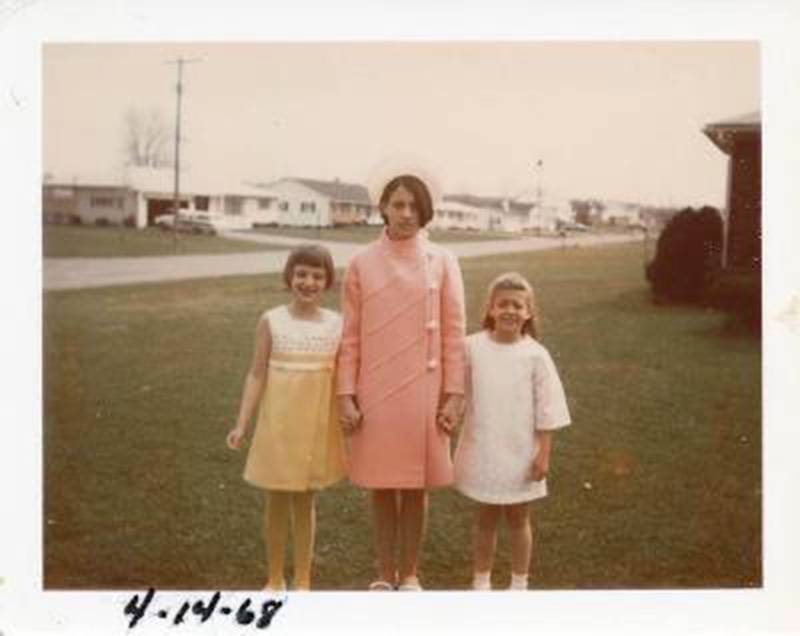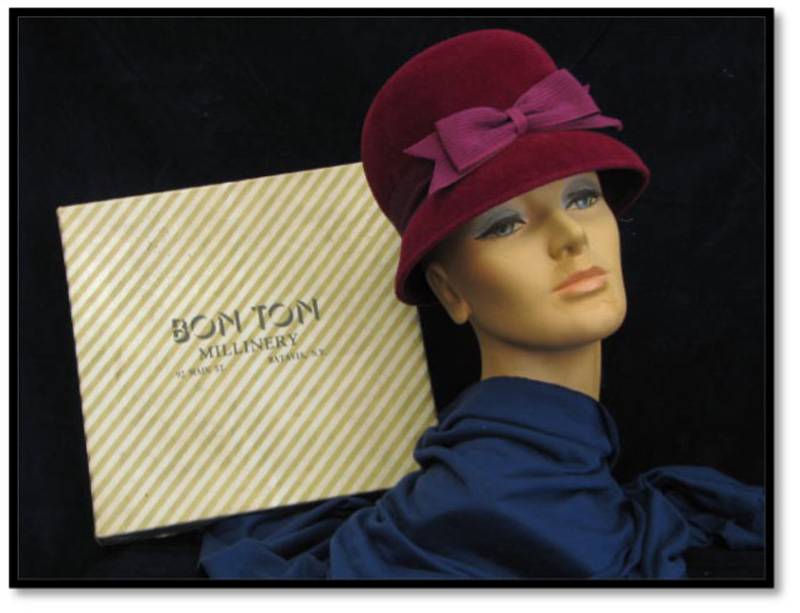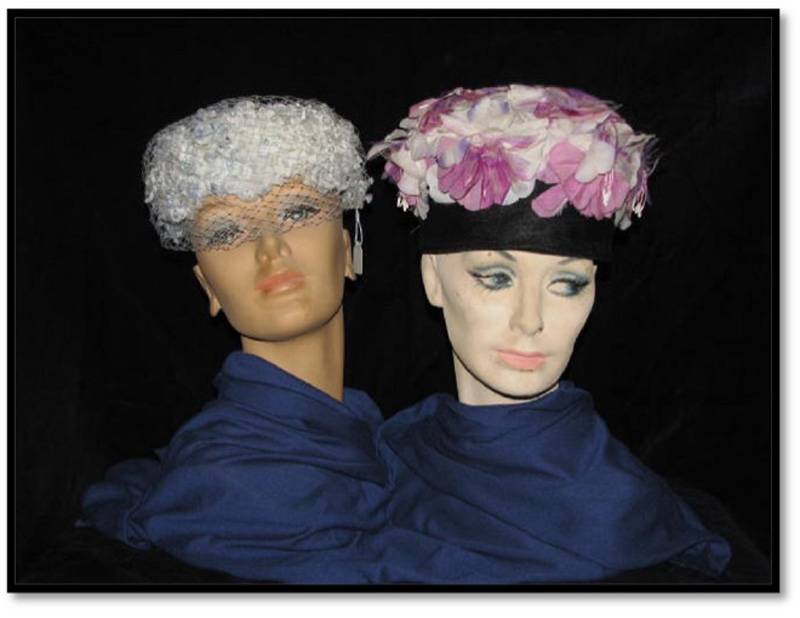
Young people today might not relate to the notion of a woman wearing a decorative bonnet that could have a bird perched in a nest atop the hat.
A hat was a must to complete a woman's attire; every hat was unique. Especially at Easter, the beautiful and unusual head adornment could be seen at every church in Genesee County. The idea of having a unique Easter bonnet spread through America in the later part of the 19th century when the New York Easter parade became a big deal in the 1880s. Wearing a freshly trimmed bonnet to church on Easter was nothing new. Now, calling it an "Easter bonnet" started to catch on.
Although early in the 1900s, most hats were enormous and adorned with flowers, feathers, ribbons, and tulle, by the 1920s, women's hair had become much shorter with the shingle cut, and the cloche (a fitted, bell-shaped hat for women invented by milliner Caroline Reboux in 1908) became especially popular. It hugged the head like a helmet with a petite brim.
According to an article in The Daily News, the ladies of Batavia looked forward to a spring opening at the millinery store of L.J. Tompkins. Tompkins' establishment had the reputation of being the largest millinery house in the county. The store was stocked with hat creations and employed the best-skilled milliner.
The favorite hat trimmings of that time were chiffons, malines (very fine silk net of gauze-like texture), liberty chiffons, Tucson braids, flowers, buckles, and ribbons. These trimmings were placed upon some of the hats on display. It was not unusual to see various hats marked "sold," proving that L.J. Tompkins' shop was trendy.
An example of a one-of-a-kind hat for sale would have been a white chip hat with a liberty scarf and a gray bird for trimming. Another example was a hat with a pastel blue brim, made of tucked liberty chiffon with point lace over Tucson crown, finished with a bunch of foliage in pastel shades.
Millinery store display windows were show places, admired by all. The store carried appropriate morning apparel and the best productions of the world's markets. Paris and New York City styles and patterns were shown, and one case of trimmings was entirely of imported goods. Special attention was also given to the sale of hair goods.

In 1931, The Bon Ton Millinery Shop, located at 92 Main St., became incorporated by the Batavia Millinery Corporation. Three businessmen owned the business in Buffalo, NY.
Another millinery business was owned and operated by Miss Harriet L. Holter at 20 Bank St. She had conducted an exclusive millinery shop in Batavia for over 25 years, catering to the most discriminating. Miss Holter's shop was on the corner of Bank and Main streets for many years. Her window displays were so unusual that many tourists stopped to inspect her innovative millinery line.
Miss Holter always carried exclusive lines of millinery, particularly the famous Gage and Knox hats (brand names). In her shop's last few years, she added the well-known Dobbs and Stetson brands. Miss Holter moved her millinery business to 20 Bank St., an ideal location to serve the people of Batavia and surrounding towns.

Mr. and Mrs. Goldstein, in 1940, operated the Bon Ton Hat Shop at 92 Main St. In 1955, Dominic Mancuso bought the shop for his wife, Mary. Also involved with the newly-acquired Bon Ton were daughters-in-law, Mrs. Nathan Mancuso and Mrs. Vincent Mancuso. Mary Mancuso was the principal owner.
Mrs. Sybil Porter, Mrs. Publia Polito, and Mrs. Emma Pontius were among the employees who worked at the store for many years. The oldest daughter, Sharon, recalls buying trips to Buffalo for hats: "Not a very exciting way for a teenager to spend a Sunday." Somebody must have noticed because this specialty store also started carrying other items. By 1968, Mary Mancuso's daughter, Mary Lou, accompanied her mother on buying trips to the Big Apple. One patron remembers buying a one-of-a-kind two-piece bathing suit, her favorite to this day, at the shop and hiding it from her father.
Mrs. Mary Mancuso, who lived at 39 Ross St., operated the store for 14 years. In 1969, Donald W. Grefrath purchased the Bon Ton Millinery. The new ownership would remodel and also carry wigs.
Today, you rarely see a woman wearing a hat unless she attends a function requiring a hat, such as the Kentucky Derby or a royal wedding in England.
Happy Easter to all my readers! Remember when mom made you wear your new Easter Hat to church on Easter Sunday.
